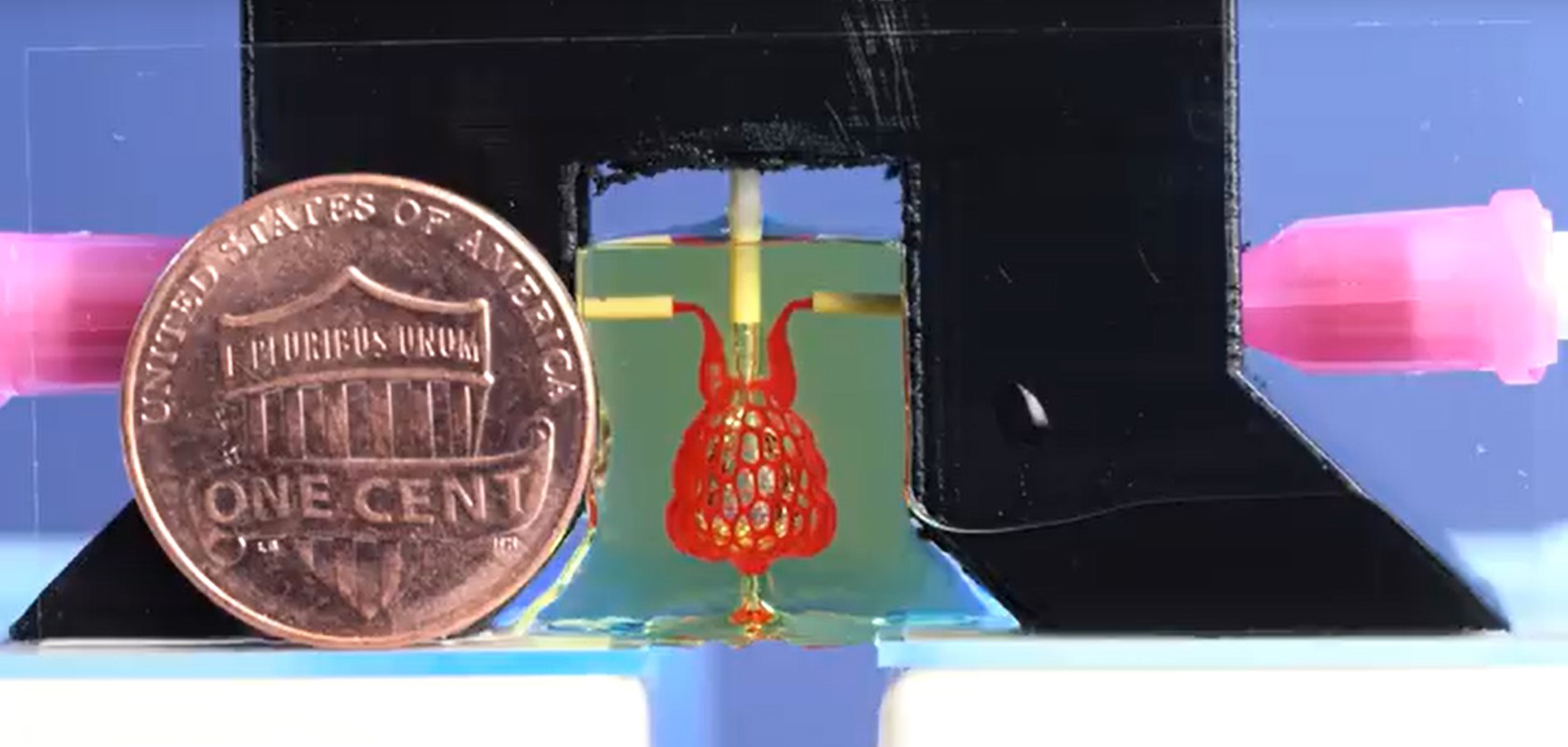
NASHVILLE (BP) — Advances in 3-D printing technology have brought scientists a step closer to manufacturing organs for people in need of transplants.
Evangelical bioethicists say the technology appears “promising” and “exciting,” provided it does not involve embryo-destructive techniques among other potential pitfalls.
Research published May 2 in the journal Science reported 3-D printing of living tissue using human cells and a water-based solution, according to media reports. Scientists have been working for years on such technology, but for the first time, they have achieved the ability to print vascular networks similar to a human body’s natural passageways for blood, air and other vital substances.
“One of the biggest road blocks to generating functional tissue replacements has been our inability to print the complex vasculature that can supply nutrients to densely populated tissues,” said Rice University bioengineer Jordan Miller, one of the lead researchers. “… Ours is the first bioprinting technology that addresses the challenge” in a “direct and comprehensive way.”
A tiny air sac mimicking a human lung was among the tissues reportedly printed by the team of 15 scientists from multiple institutions, according to media reports. Researchers also reported printing liver tissue that was implanted successfully into mice.
Miller said the technology — known as the “stereolithography apparatus for tissue engineering” (SLATE) — also can produce valves like those found in human hearts and legs, Science Daily reported.
Evangelical bioethicist C. Ben Mitchell called the advancement of SLATE “an exciting development, indeed.”
“If the source of the tissues doesn’t require human embryo destruction, this seems like a very promising technology,” Mitchell, Graves Professor of Moral Philosophy at Union University, told Baptist Press in written comments. “We would still be miles from human clinical trials, of course, but the proof of concept is encouraging.”
Joy Riley, a physician and executive director of the Tennessee Center for Bioethics, agreed that “on the face of it, 3-D bioprinting is an exciting technology. There is hope for perhaps a day when organs can be bioprinted, and thousands of people can be removed from the waiting list for organ donation for excellent reasons.”
However, she urged observers “to examine the details involved.”
“Of particular interest is the source of the cells involved,” Riley told BP in written comments. “If the cells used are adult human cells that have been treated to form induced pluripotent stem (iPS) cells, then as long as those cells were properly procured (e.g., informed consent, sterile technique, etc.), this generates no ethical concern. If the source is mesenchymal stem cells (MSCs) from fetal tissues or utilizes embryonic or other fetal tissues, then ethical issues by definition have arisen.”
Currently in the U.S., more than 113,000 people are awaiting organ transplants, according to the U.S. Government Information on Organ Donation and Transplantation website. Yet only 36,528 transplants were performed in 2018, and 20 people die each day waiting for a transplant.
Miller, of the research team, said, “We envision bioprinting becoming a major component of medicine within the next two decades.”
The Southern Baptist Convention adopted a resolution “on human organ donations” in 1988 encouraging “voluntarism regarding organ donations in the spirit of stewardship, compassion for the needs of others, and alleviating suffering.”
–30–
David Roach is chief national correspondent for Baptist Press, the Southern Baptist Convention’s news service. BP reports on missions, ministry and witness advanced through the Cooperative Program and on news related to Southern Baptists’ concerns nationally and globally.

















